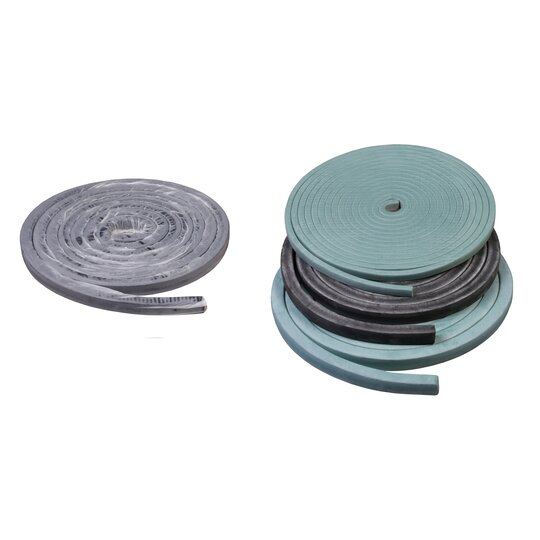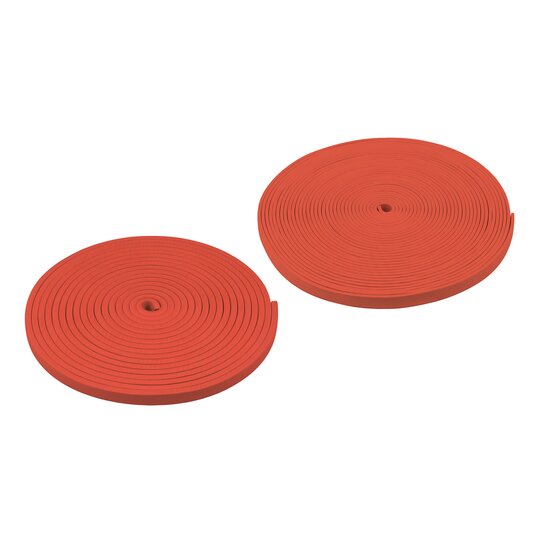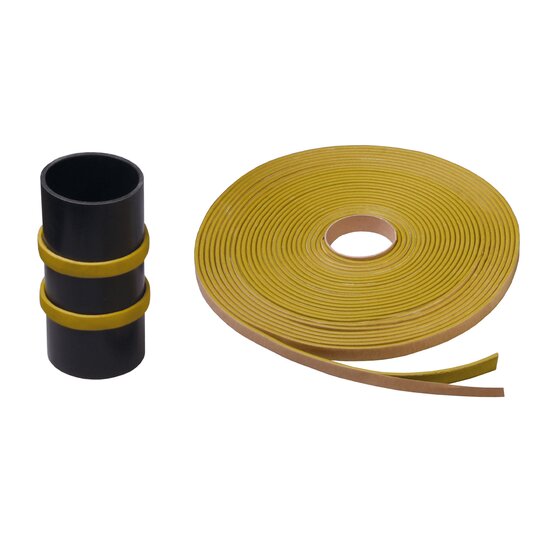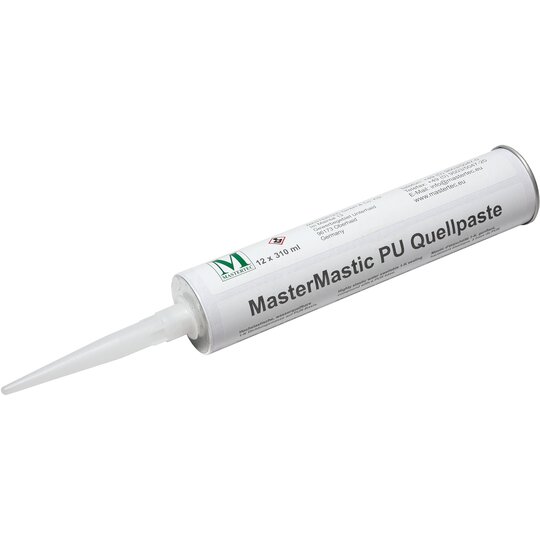Hydrophilic waterstop
Hydrophilic waterstops prevent that pressing and non-pressing water penetrates the building. Our hydrophilic waterstop is suitable for zones with frequently varying water levels. In the construction joint, the Waterstops are completely surrounded by concrete. On contact with water, the tapes swell and thus seal the joint.

Further information about the subject Hydrophilic Waterstops
Our bentonite waterstop MASTERSTOP for reliable waterproofing of construction joints as well as penetrations in concrete structur...
For sealing construction joints and penetrations in concrete structures. With a proven ability to withstand a pressure of 8 bar, F...
Self-adhesive bentonite swelling tape which expands upon contact with water and prevents water penetration....
Single-component, solvent-free polyurethane-based swelling paste. MasterMastic PU is a swellable sealing compound for waterproofin...
Accessories for bentonite and TPE waterstops...
What is the role of hydrophilic waterstops in reinforced concrete construction?
The white tank is a structure in which the concrete, in addition to its load-bearing function, also provides waterproofing against pressurised and non-pressurised water. The requirements for this construction method are regulated in the WU Guideline (Water Impermeable Concrete Structures) issued by the German Institute for Building Technology (DIBt). The tightness of the joints plays a special role in the construction of a white tank. In accordance with the WU guideline, these must be sealed appropriately depending on the type of joint. Proof of usability is provided in the form of an abP (General Building Supervisory Test Certificate). The issue of the test certificate provides proof of functionality and defines the area of application for the respective product.
What are hydrophilic waterstops used for?
Hydrophilic waterstops are particularly suitable for waterproofing of construction joints. Hydrophilic waterstops have a proven track record which goes back many years in construction practice. One of the most common areas of application is the transition between floor slabs and rising walls. Use in the wall/wall or wall/ceiling area is also possible. The prerequisite is that it is a construction joint by definition of the WU guideline. Expansion joints cannot be sealed with hydrophilic waterstops Hydrophilic waterstops are a highly effective solution, especially for joints with critical geometry.
When selecting hydrophilic waterstops, the area of application defined for the product in accordance with the General Building Supervisory Test Certificate (abP) must always be observed. The suitability for zones with frequently varying water levels is a particularly important point here. The suitability for zones with frequently varying water levels is important for structures that are only temporarily exposed to water and then dry off again. The corresponding proof of suitability for use in zones with frequently varying water levels (if available) is listed in the General Building Supervisory Test Certificate. Our hydrophilic waterstops are rectangular joint profiles with different cross-sections based on bentonite or TPE. These are supplied as a roll in different lengths depending on the size and material.
How does a hydrophilic waterstop work?
The basic operating principle of hydrophilic waterstops is the same regardless of the material. On contact with water, the hydrophilic waterstop increases its volume. It expands in the direction of the surrounding concrete and seals joints securely and permanently.
The functionality of the hydrophilic waterstops is subject to further boundary conditions in addition to professional installation. It is essential for the functionality that premature swelling of the profiles due to water contact is prevented. In particular, standing water in the construction joint leads to premature swelling. Damage to the hydrophilic waterstops must also be avoided. A visual inspection at the latest possible time, for example before closing the wall formwork, is absolutely essential. Swollen or damaged profiles must be removed and replaced.
How are hydrophilic waterstops installed?
The hydrophilic waterstop is positioned on the hardened concrete of the base slab in the center of the construction joint. The hydrophilic waterstop must be fixed to the floor slab in such a way that it rests on the entire surface and its position cannot change during the subsequent concreting of the wall component. The hydrophilic waterstops can be fixed with swelling tape adhesive. Bentonite waterstops can also be fixed by means of swelling tape grids. The grid profiles are slipped over the hydrophilic waterstops positioned in the construction joint and anchored in the concrete with suitable nails. The stability of the grids transfers the fixation to the complete laying length and ensures full-surface support. In the joint or corner area, the hydrophilic waterstops are butt jointed. Finally, the hydrophilic waterstop must be installed in a self-contained system. Irrespective of the fastening variant, the swelling tapes must be positioned within the reinforcement with a minimum concrete cover of at least 80 mm on all sides.
Please note that the concrete must be sufficiently compacted and free of voids and gravel pockets. When concreting the base of the wall, the use of a connection mix is generally recommended, and in some cases even necessary according to the WU guideline, depending on the type of construction. Experience has shown that the use of the connection mix in combination with proper concrete compaction results in sufficient boundary conditions for waterproofing with hydrophilic waterstops. During compaction, care must be taken to ensure that the hydrophilic waterstops are not damaged with the vibrating bottle.





 English
English




